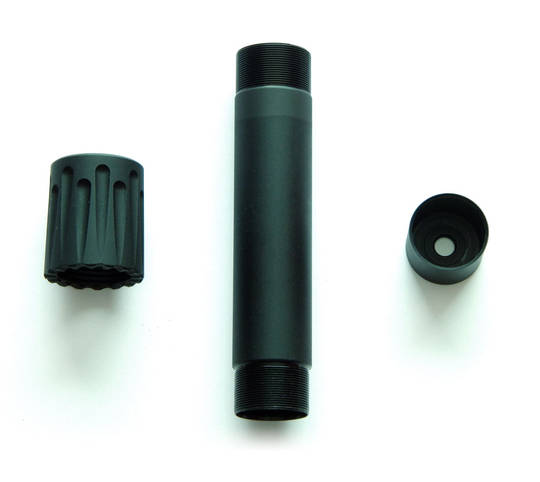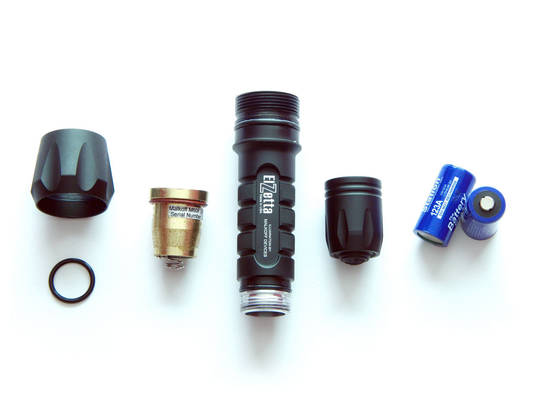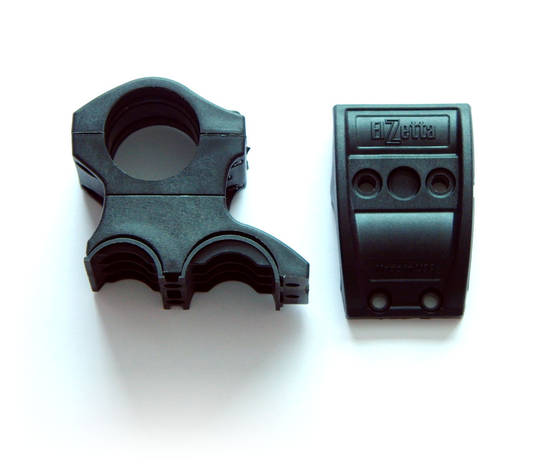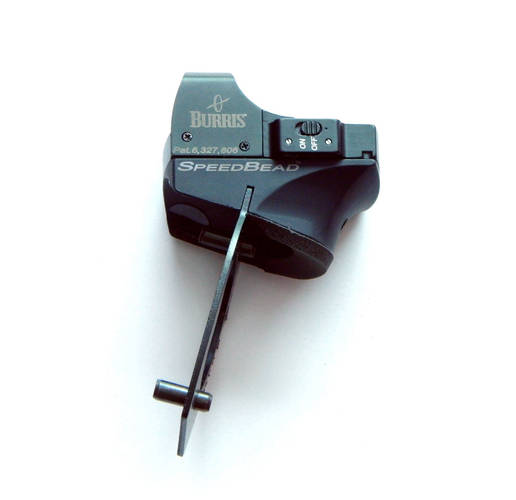[ This guest post was written by James. ]
I think every house should have a shotgun. But you don’t need a “shoulder thing that goes up”, a potentially expensive pistol grip stock, a shell carrier on the receiver or stock, and you probably shouldn’t even install a sling.
I find the most important quality in a home defense weapon to be the degree of handiness it possesses. Is it compact? It’s difficult to keep 28 inches of barrel from alerting someone that you’re about to round a corner, so a short weapon is a handy weapon. Is it lightweight? The heavier it is, the harder it will be to transition to the threat: a lightweight weapon is a handy weapon. Is it easy to use? Turning on optics, fussing with slings, breaking your firing hand grip to disengage safeties – these are excellent ways to waste time. Home invasions don’t happen when you’re prepared for them, so the easier it is to employ the weapon, the more likely you’ll be able to react to the threat.
I made the mistake of heavily accessorizing my first shotgun, a ridiculously “tacticool” FN TPS. As a home defense weapon, it’s pretty poor. As modified, it could be used effectively on some sort of fantasy battlefield. I’ve used it to make effective groups with rifled slugs at distances of up to 100 meters. But it’s heavy, has a sling that can get in the way, the optic needs to be turned on, and the ghost ring sight arrangement is slow which makes it bad for close range use, where speed can be much more important than the precision and accuracy that adjustable ghost rings offer.
What to look for
There are a number of simple pump-action guns available that are short, lightweight, easy on the wallet, and can be made into capable home defense weapons with a minimum of added parts. If you absolutely must have a pistol-grip stock, make sure the type of shotgun you want has a cross-bolt safety that can be reached by your firing hand without breaking your grip. Many shotguns have a tang safety, which is impossible to disengage quickly with a pistol grip stock installed. There’s nothing wrong with a tang safety, they were simply designed with traditional stocks in mind. You may wish to purchase a semi-auto shotgun, and there’s nothing wrong with that if your budget allows for it. You should do your homework on the shotgun first, and find out if it will be reliable with the types of loads you have in mind. If you don’t know what all that means, you might save your self some grief by settling for a pump-action.
The longest distance I can find inside my home is about ten meters, and buckshot out of an 18” barrel with a completely open choke is going to be effective at that range. As mentioned before, the shorter your weapon is, the more easily you’ll be able to employ it when you’re working indoors. While you can own shotguns with even shorter barrels, doing so will require you to jump through some legal hoops and may not be possible in every state.
For my particular shotgun build, I chose a 7.2 pound Benelli SuperNova Tactical in 12 gauge. The choice is largely arbitrary, if you already own a particular make and model of shotgun that isn’t suitable for home defense, it makes sense to acquire a similar model so that you can retain your muscle memory and have some parts commonality. Most 18” pump guns will weigh around seven pounds unloaded.
Picking iron sights
When looking at iron sight arrangements, remember that speed becomes more and more important the closer your proximity to the threat becomes. There are three general types of iron sight arrangements on shotguns. A bead is quickest and offers a good deal of peripheral vision. Open rifle sights can be quick if they’re simple enough. For example, I find the open rifle sights on Benelli’s to be very quick, like a good set of handgun sights. Remington’s open rifle sights aren’t as plain, however, which makes them more difficult for me to line up quickly. Ghost ring sights are great for precision at long range and are usually adjustable for windage and elevation, but it can be both difficult and slow to acquire a sight picture. Once you do acquire a sight picture with ghost rings, your peripheral vision will become limited.
Increasing shotshell capacity
Some shotguns, such as the aforementioned FN TPS, will be set up to hold the maximum amount of 2 ¾” shotshells from the factory. Generally, a shotgun with an 18-18.5” barrel will be able to hold seven 2 ¾” shells in the magazine tube provided the tube is roughly even with the barrel. That being said, most shotguns – my new SuperNova included – only hold 4 or 5 shells in the magazine tube as offered from the factory. This is usually an easy fix, and there are several manufacturers that produce magazine tube extensions that will allow you to increase the capacity of your shotgun. Beware of caveats with various makes and models. Some Remington 870’s, for example, have indentations inside the magazine tube that prevent the use of a magazine extension without modification.
I chose a Nordic components magazine tube based on their positive reputation, lightweight aluminum construction, and modular design.
Nordic is possibly the most expensive manufacturer of this type of accessory, however, and you can get a quality part for less money. While you aren’t likely to need seven or eight rounds in a home defense encounter, it certainly can’t hurt, and the extension gives you space to mount what I consider to be the most important add-on to any true home defense weapon: a white light.
Integrating a white light
I consider a white light to be important simply because it is dark half of the time, and it’s dark more often than not when I’m home given that I work a day shift. If you’re reacting to a threat in your home, you’re better off employing a light on your weapon than trying to juggle a gun with one hand while you fiddle with the light switch on the wall. Modern defensive lights are extraordinarily bright, which will give you the advantage of being able to see the threat in detail while momentarily blinding it. If you find it critically important to identify the threat before engaging it as I do, a good white light will give you the upper-hand in a time-critical situation.
I chose to use Elzetta’s Complete Shotgun Illumination Kit, which includes their ZFL-M60 light with a flood lens, and their lightweight polymer ZSM light mount for shotguns.
If the ZFL-M60 isn’t in your budget, the ZSM mount can be had separately and will fit a number of different lights with the included adapters.
The important thing about the ZSM mount is that it positions the light far enough forward so that the barrel doesn’t create a significant shadow. I have mine mounted approximately 1.5 inches behind the barrel, which puts it well within reach of my support hand’s thumb, and just far forward enough to avoid an unwelcome shadow.
But what about a red dot sight?
You may have noticed the small optic mounted in the very first picture of this article. As something of an experiment, I’ve mounted a Burris SpeedBead (http://www.burrisoptics.com/speedbead.html) on my SuperNova, which is simply a Burris FastFire II reflex sight that comes with a special mount for your shotgun.
While I would normally be against the idea of mounting an electronic optic on a home defense weapon, this particular optic avoids many of the pitfalls of doing so. Many optics can add a significant amount of weight. Additionally, optics generally obscure the iron sight arrangement when mounted on shotguns, and most electronic optics need to be turned on before they’re really useful. The SpeedBead is marketed towards wing shooters, but I find it to be a fantastic optic for use on a home defense weapon. The mount is sandwiched between the receiver and stock, and this allows the tiny optic to be dropped down behind the receiver for absolute co-witness with the iron sight arrangement, be it bead, open rifle, or ghost ring. This means that you can use the iron sights by looking through the window of the SpeedBead, since the two different sight systems are on the same plane. Additionally, the FastFire II optic that is used in the SpeedBead product is so light that it can be mounted on a handgun slide, so you aren’t adding a significant amount of weight to your weapon.
The reason I’ve broken my general rule of keeping the shotgun handy (by adding an electronic optic with an on/off switch) is that I haven’t introduced the usual major disadvantage of doing so. If I’m unable to turn on the optic, I can still use the iron sights effectively. If I can find the time to turn on the optic, however, I’m able to keep both eyes open while maintaining an excellent sight picture, which is a huge advantage and provides additional situational awareness. Additionally, a glowing red dot can often be easier to pick up than iron sights in low light environments.
Conclusion
My Benelli SuperNova Tactical started life weighing 7.2 pounds, and I’ve added less than a pound of accessories and zero linear feet of picatinny rails to it all while satisfying my needs. I’ve tested the setup with a couple hundred rounds of target loads, as well as a few magnum rounds and even a couple 3.5” magnum slugs, which honestly generate too much muzzle energy to shoot repeatedly out of a 7.9 pound gun. They do make for an excellent test of the durability of the installed accessories, however. While I could have added a lot more to a shotgun like this, doing so would most likely detract from the base function of a weapon with a singular purpose: to be quickly at hand when something goes bump in the night.
[ About the Author: James has been serving in the Army Reserve as a mechanic for the past six years. At his unit, he has taught marksmanship as well as team-level urban warfare tactics. James spends most of his time at his civilian job repairing laser printers so he can afford to buy more guns and argue about them with people on AR15.com all day. ]
 Your Privacy Choices
Your Privacy Choices








